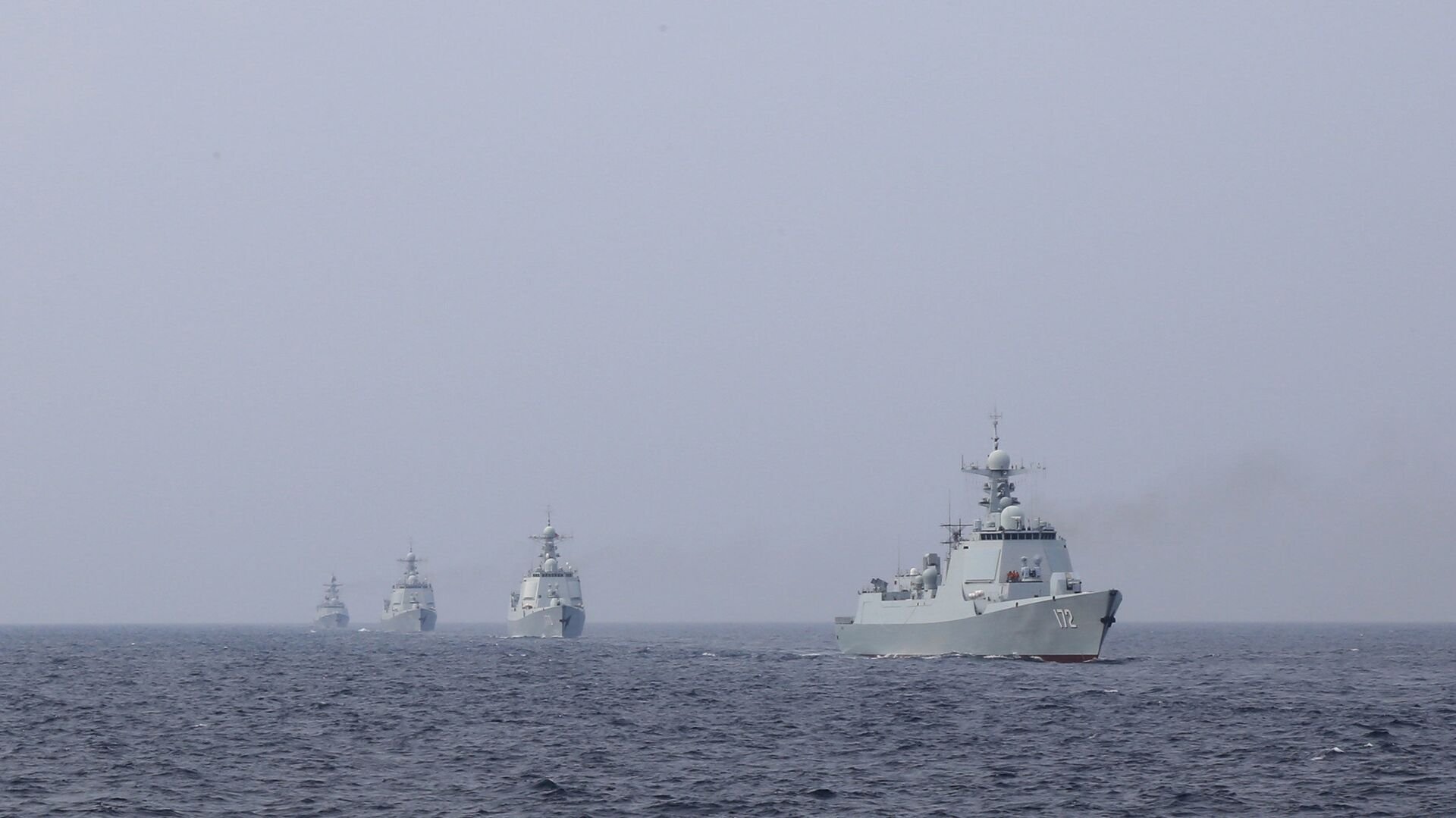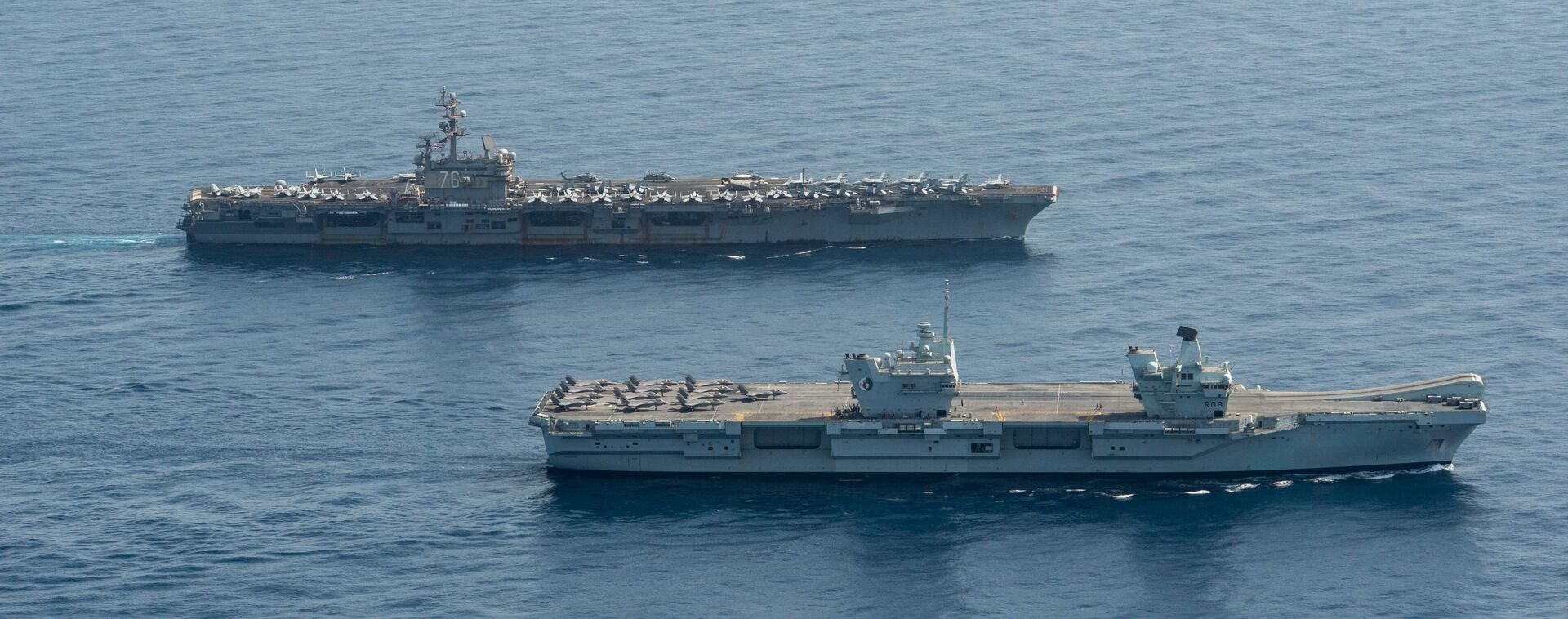Chinese Navy Hold South China Sea Drills Amid Arrival of UK Carrier Strike Group

© Yu Lin
Subscribe
Both the US and China have accused the other of “destabilizing” the South China Sea with their military drills, but one nation has an extensive shoreline on the waterway and the other doesn’t own a spot of territory within thousands of miles of it. Now the UK seems eager to assert its relevance and insert itself into the complex situation, too.
The Chinese People’s Liberation Army Navy (PLAN) is holding military drills in the South China Sea this week in anticipation of the arrival of the British aircraft carrier HMS Queen Elizabeth and its task force.
From Monday until Thursday, the PLAN has closed off two areas of the South China Sea off China’s southern Guangdong Province to maritime traffic, where it is holding maritime exercises, according to the Global Times.
The report didn’t name any Chinese warships taking part, but according to satellite imagery obtained from the European Space Agency last week, the PLAN aircraft carrier Shandong was in the South China Sea at that time, and the amphibious assault ship Hainan was as well, earlier this month.
The Global Times noted that the drills likely weren’t specifically timed to coincide with the arrival of the HMS Queen Elizabeth, which called to port in Singapore on Monday, but the paper noted that the drills demonstrate the readiness of PLAN forces, which have seen a pronounced uptick in activity by the US and its allies in the waters all around China, but specifically in the South China Sea, in recent months and years.
The British Royal Navy’s new flagship, the 72,000-ton aircraft carrier embarked on its first tour of duty in May, stopping off at numerous ports along the way and drilling with multiple nations’ navies, including the US and India.

Royal Navy aircraft carrier HMS Queen Elizabeth ( R 08), front, and aircraft carrier USS Ronald Reagan (CVN 76) operate in formation in the Gulf of Aden, July 12.
Last month, UK Foreign Secretary Dominic Raab told the foreign affairs committee in the House of Commons that “it's absolutely right we exercise and defend the rights, and we do so from the Ukrainian territorial sea to the South China Sea.”
The UK defense ministry also revealed last week that two RN warships will be permanently stationed “in the region” later this year. However, Defense Minister Ben Wallace gave no indication which ships that would be or where they would be based, although the RN does operate a facility in Brunei in addition to its base in Singapore.
In response to the announcement and to the imminent arrival of the Queen Elizabeth, Chinese Foreign Ministry spokesperson Zhao Lijian said Beijing “firmly opposes the practice of flexing muscles,” noting it “undermines China's sovereignty and security and sabotages regional peace and stability.”
However, Zhao noted that if the British warships remain in international waters, their rights will be respected.
Fears about British “muscle flexing” aren’t unwarranted, though: just weeks ago, one of the ships in the RN’s carrier task force, the HMS Defender, flagrantly violated Russian sovereignty by sailing through Russian territorial waters off the coast of Crimea. UK Prime Minister Boris Johnson said the warship had never entered Russian waters - because the UK doesn’t recognize Crimea’s 2014 referendum to rejoin Russia and continues to insist that Crimea belongs to Ukraine, from which the peninsula declared independence prior to the referendum.
The UK has supported American efforts to delegitimize Chinese territorial claims over several groups of small islands in the South China Sea that overlap with the claims of other regional nations, including Taiwan, the Philippines, Brunei, Malaysia, and Vietnam. While these nations have made strides toward resolving the disputes themselves, the US and its allies have inserted themselves into the situation, presenting it as one requiring military confrontation, rather than mutual cooperation, in order to be resolved.

